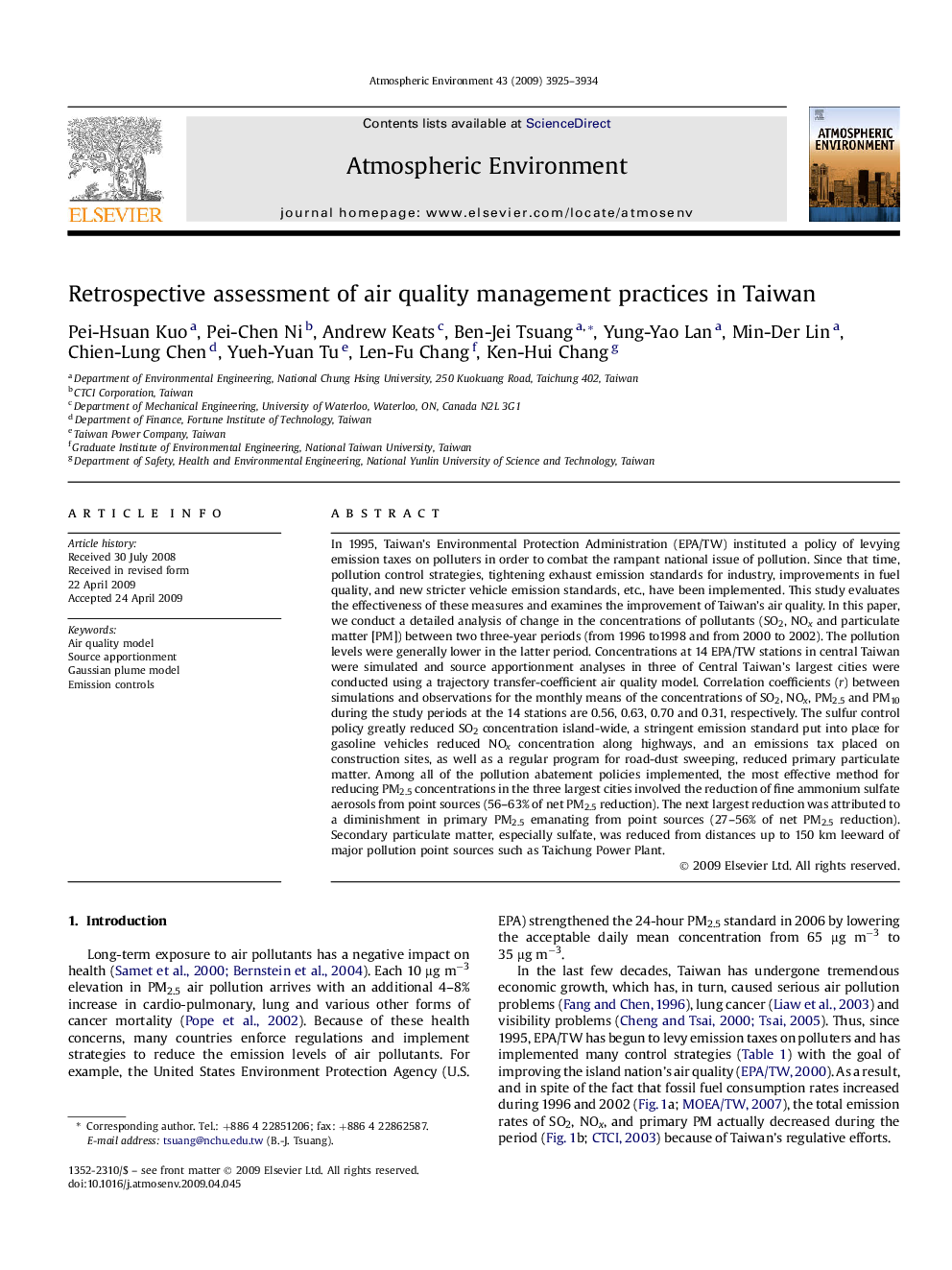| Article ID | Journal | Published Year | Pages | File Type |
|---|---|---|---|---|
| 4441481 | Atmospheric Environment | 2009 | 10 Pages |
In 1995, Taiwan's Environmental Protection Administration (EPA/TW) instituted a policy of levying emission taxes on polluters in order to combat the rampant national issue of pollution. Since that time, pollution control strategies, tightening exhaust emission standards for industry, improvements in fuel quality, and new stricter vehicle emission standards, etc., have been implemented. This study evaluates the effectiveness of these measures and examines the improvement of Taiwan's air quality. In this paper, we conduct a detailed analysis of change in the concentrations of pollutants (SO2, NOx and particulate matter [PM]) between two three-year periods (from 1996 to1998 and from 2000 to 2002). The pollution levels were generally lower in the latter period. Concentrations at 14 EPA/TW stations in central Taiwan were simulated and source apportionment analyses in three of Central Taiwan's largest cities were conducted using a trajectory transfer-coefficient air quality model. Correlation coefficients (r) between simulations and observations for the monthly means of the concentrations of SO2, NOx, PM2.5 and PM10 during the study periods at the 14 stations are 0.56, 0.63, 0.70 and 0.31, respectively. The sulfur control policy greatly reduced SO2 concentration island-wide, a stringent emission standard put into place for gasoline vehicles reduced NOx concentration along highways, and an emissions tax placed on construction sites, as well as a regular program for road-dust sweeping, reduced primary particulate matter. Among all of the pollution abatement policies implemented, the most effective method for reducing PM2.5 concentrations in the three largest cities involved the reduction of fine ammonium sulfate aerosols from point sources (56–63% of net PM2.5 reduction). The next largest reduction was attributed to a diminishment in primary PM2.5 emanating from point sources (27–56% of net PM2.5 reduction). Secondary particulate matter, especially sulfate, was reduced from distances up to 150 km leeward of major pollution point sources such as Taichung Power Plant.
